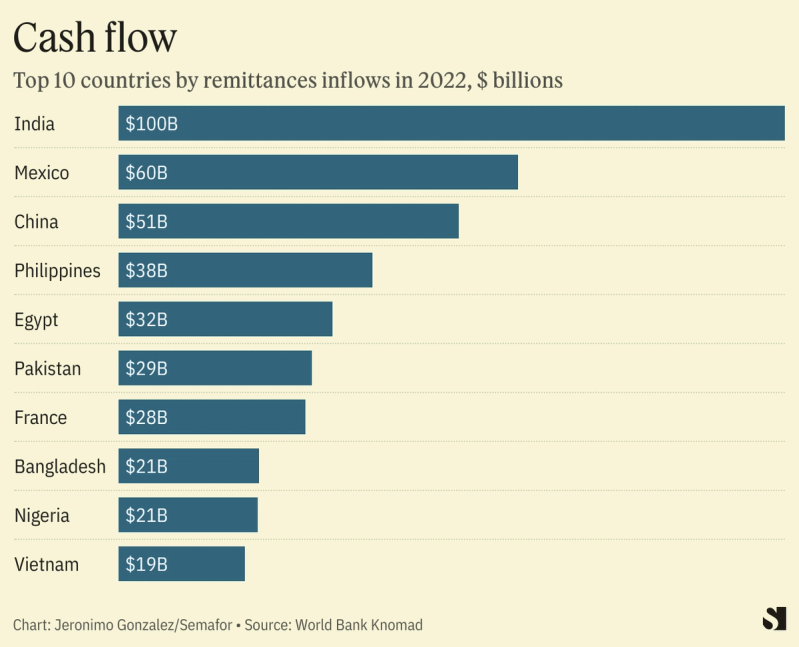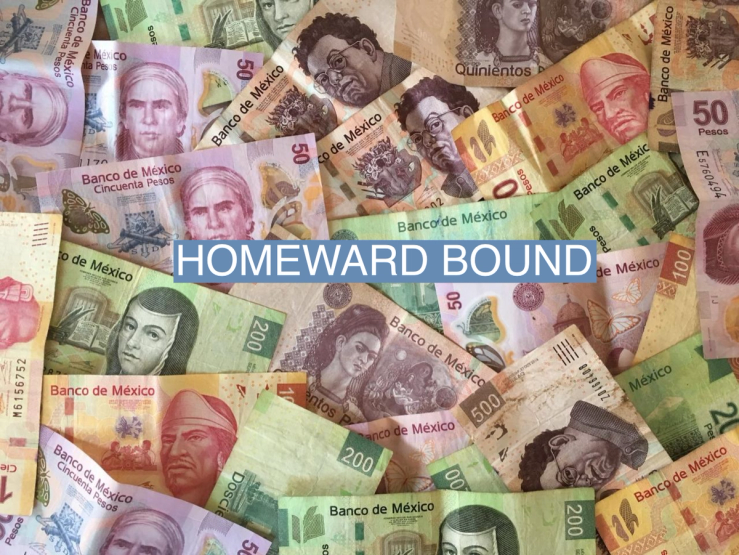The News
Mexico expects to receive record remittances this year. Carlos Serrano, the chief economist of BBVA, the country’s largest bank, estimates remittances will grow by between 7% and 9% to over $60 billion in 2023.
In this article:
Know More
Despite soaring inflation in high-income countries — where most remittances originate — transfers to low- and middle-income countries (LMICs) grew 5% to $626 billion last year.
Remittances are a vital source of household income for these countries, making up a large share of their economies.
Tonga received almost 50% of its GDP from remittances alone in 2021, compared to Mexico’s 4.3%.

El Salvador and Honduras, the Latin American countries most reliant on remittances, generated more than a quarter of their GDPs from them. Almost a quarter of all remittance flows to LMICs went to Latin America and the Caribbean.
The World Bank recently estimated that increasing pressures from climate change — often resulting in displacements stemming regional conflicts over resources — will continue to fuel migration, further driving up international remittances.
“National and regional development strategies should be viewed through a climate migration lens,” the study’s lead author said.
The View From Ukraine
Before the Russian invasion, Ukraine was Europe’s largest recipient of remittances.
“We observed a significant decrease in family remittances transferred to Ukraine by Ukrainian migrants,” an official from the National Bank of Ukraine said. “We assume it can be related to the fact that these households decided that it would be easier if their family members leave Ukraine and stay with them.”
In 2021, Ukraine received a record $18.2 billion in remittances, which are associated with improving nutritional and educational outcomes, increased birth weight, and alleviating poverty in host countries.
The View From The U.S.
More than $70 billion — or roughly 14% of total world remittances — were sent from the U.S., the highest amount for any country.
Experts say migration may help prevent the U.S.’s economy — driven by historically-low unemployment rates — from overheating.
“Migrants help to ease tight labor markets in host countries while supporting their families through remittances,” Michal Rutkowski, World Bank Global Director for Social Protection and Jobs said.
“Inclusive social protection policies have helped workers weather the income and employment uncertainties created by the COVID-19 pandemic. Such policies have global impacts through remittances and must be continued,” he added.


